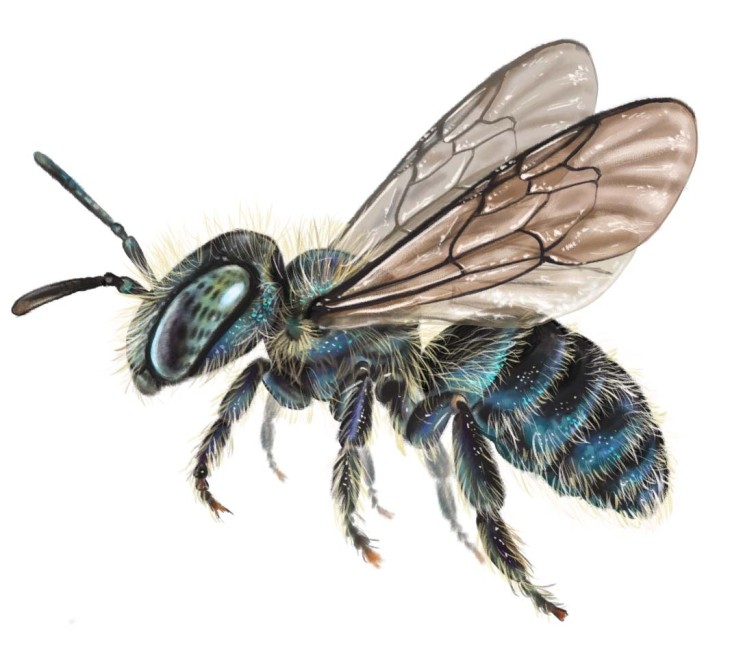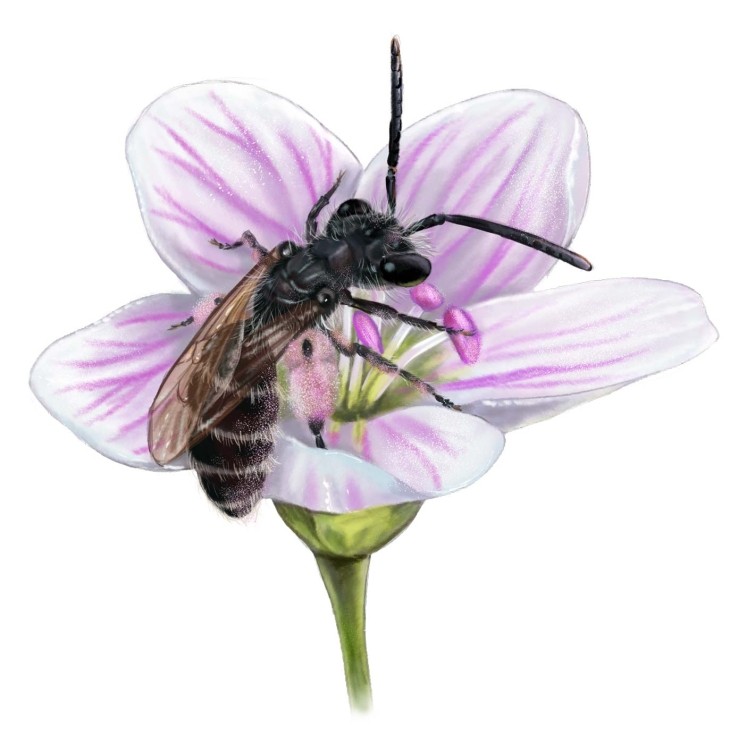
There’s been considerable focus in recent years on enhancing bee habitat through meadow restoration and gardening with pollinator-friendly plants. But forests are also important to many bee species. New research by Rachael Winfree of Rutgers University shows that forest bees are also integral to the health and productivity of ecosystems across the region.
In a 2021 study, Winfree’s lab compared bees in forests to those in more familiar open habitats such as fields and developed areas. The researchers were hoping to determine how many species were found only in forests (termed forest-associates) and how other factors, such as forest size and age, affect the diversity of bee populations. They collected bees from forested and open sites across New Jersey, Pennsylvania, and New York and reviewed museum collections to see if they could draw any correlations between historic land use changes and bee diversity in the region.

Forest-associates become active in March or April, visiting ephemeral wildflowers and early-blooming shrubs before leaf-out of the canopy. Many of these bees also depend on other characteristics found only in forests, such as rotting logs for nesting. Unlike honeybees, most forest species are solitary and have short flight seasons, with each female building her own nest before she dies, around June. About 32 percent of the species collected for the study were forest-associates, including the spring beauty miner bee, the black-and-yellow nomad bee, and the dwarf mason bee, shown in these illustrations.
In larger forests, the team found a higher number of different species and a greater abundance of forest-associates. The researchers’ museum analysis also showed that the richness of forest-associates has increased markedly from 1872 to 2011, which they attribute to a 43 percent increase in forest cover during that time period, as former agricultural and open land has reverted to forest.

In addition to the forest-associates, researchers observed about 37 percent of species were found primarily in open and agricultural areas, and 31 percent were generalists, found in both forested and open areas. There is some evidence that forest-associates may also visit open or developed land later in their active season and that such crossover may be crucial to increasing the productivity of early-blooming crops. Honeybees can’t do it all! A high degree of diversity among pollinators supports the diversity of plant communities across the landscape.
The team’s findings underscore the importance of large, intact forests to maintaining healthy bee populations. “As I see it, the forest species are probably our original native bee fauna, or at least the dominant fauna, of eastern North America,” Winfree said, “so it’s really important that we understand which species these are and what their habitat needs are in the same sense that we focus on forest-dependent species of other taxa such as birds.” Steps should also be taken, she said, to minimize the use of insecticides that can inadvertently harm bees, especially in areas of the world that are being rapidly deforested.
As for the most effective way to support forest bees in the Northeast, Winfree said, “It’s really about habitat. If the plants and habitat the bees evolved with are there, the bees will be there.”
For more information, see the Xerces Society Pollinator Conservation Program.


Discussion *